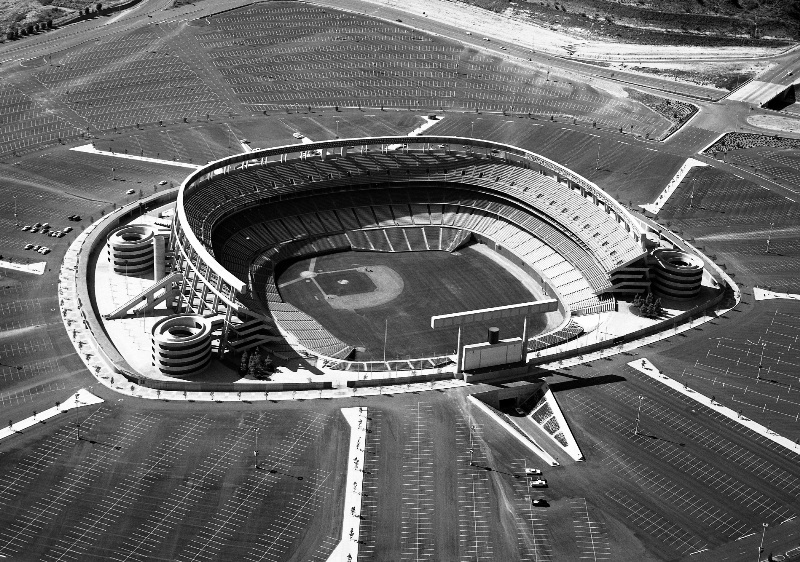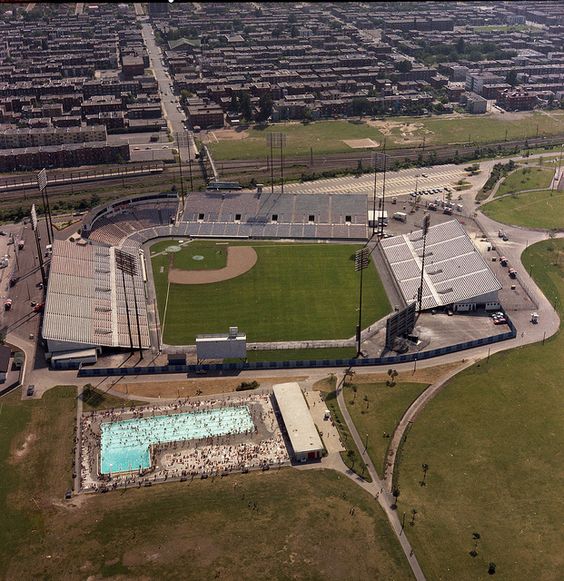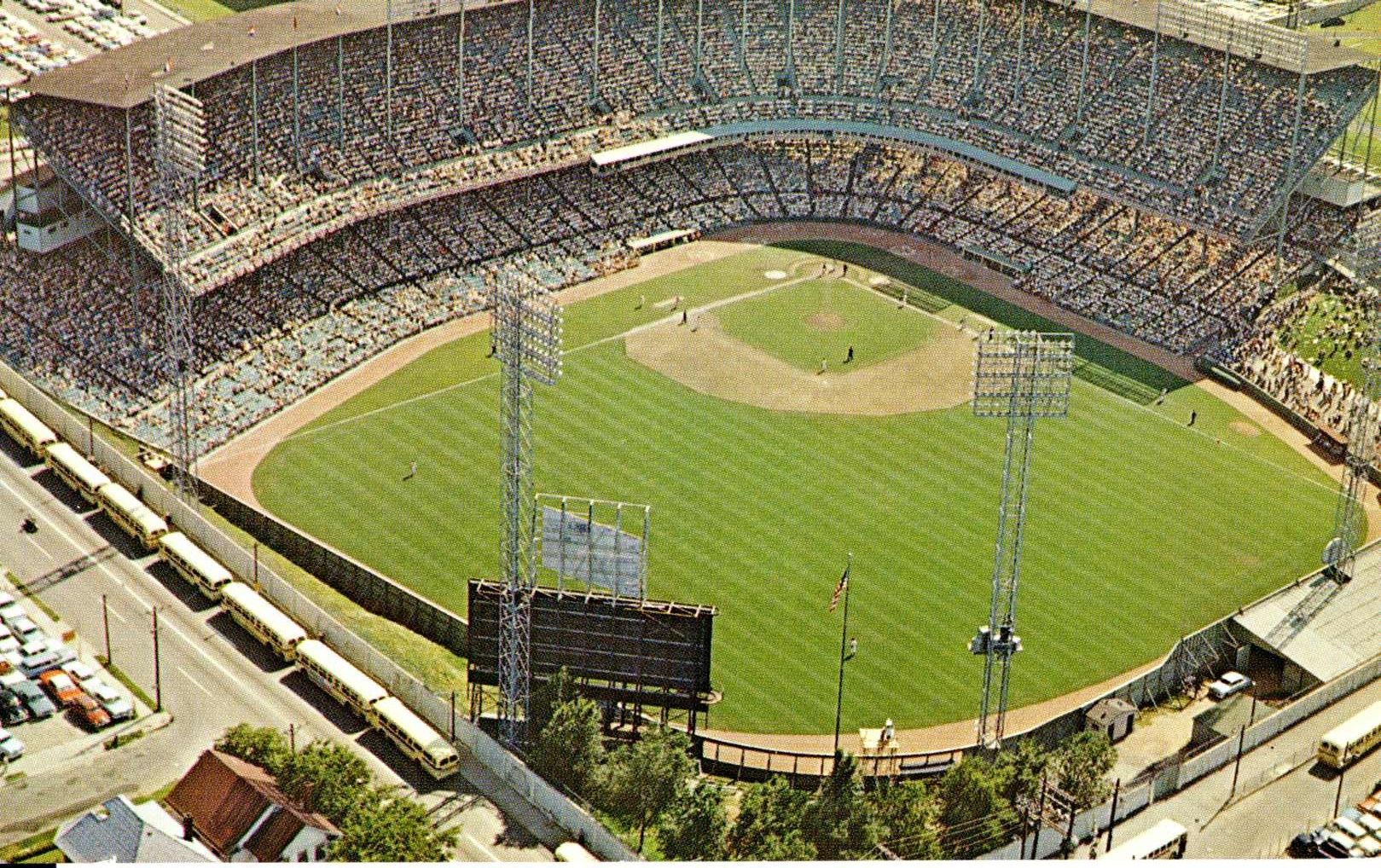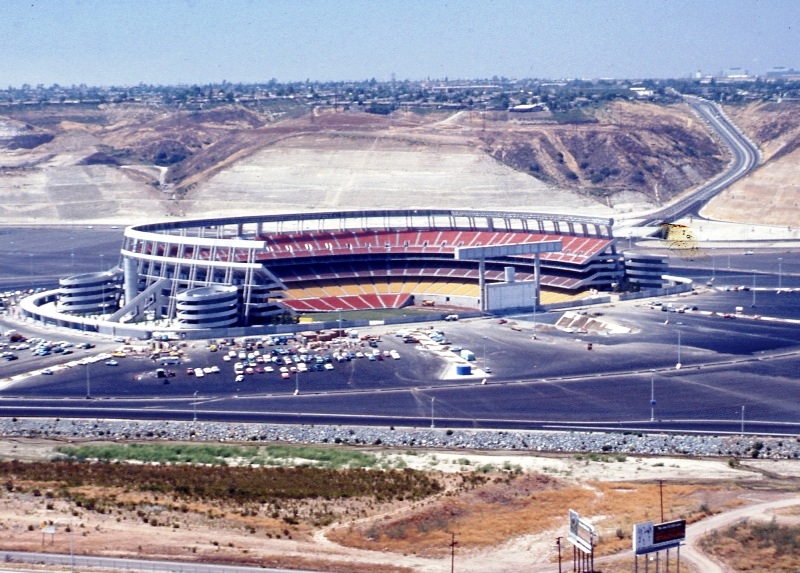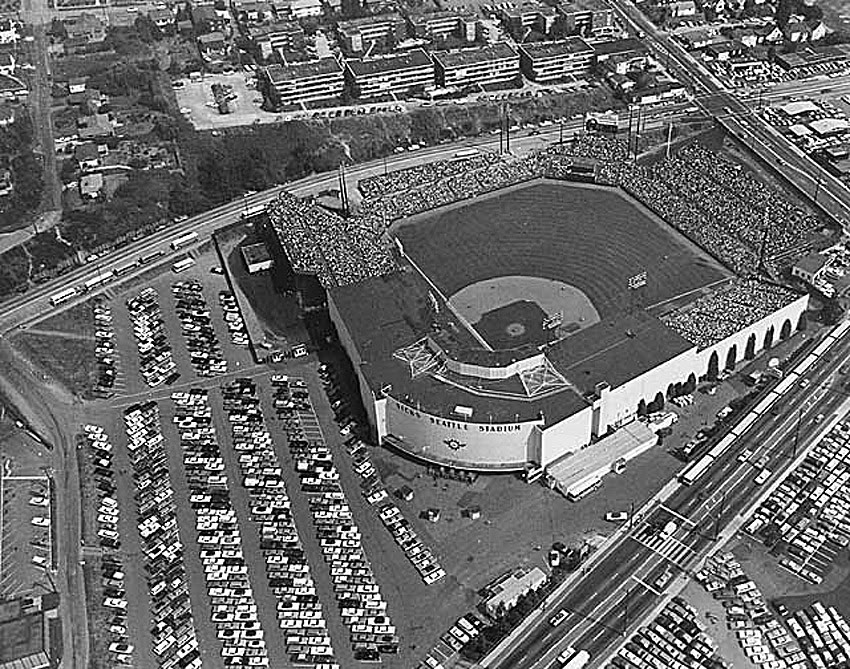With the 2019 season underway, it’s a good time to visit the Ballpark Digest archives and look at the 1969 MLB expansion ballparks, when the major leagues expanded by four teams.
In the offseason we ran a series on the 1969 MLB expansion ballparks, looking at the three temporary facilities and one permanent home put to use in Kansas City, Seattle, Montreal and San Diego. It was a motley assortment, to be sure: two old MiLB facilities expanded for MLB, a community park Jarry-rigged for the Expos, and a gleaming new stadium that brought both MLB and the NFL to San Diego. Here’s a look at all four, with links to the original articles:
Jarry Park Stadium
Of all the four ballparks pressed into service for 1969 expansion, the most unlikely home for Major League Baseball was Jarry Park Stadium. Pressed into service when MLB expansion was moved up by two years, Jarry Park Stadium was a modest facility hurriedly upgraded, approved by MLB only on the condition it would be replaced as soon as possible. But the promised domed stadium was delayed until 1977 when Olympic Stadium opened, giving the Montreal Expos eight seasons at Jarry Park. (Technically, Jarry Park Stadium is located within the larger Jarry Park, but both Jarry Park and Jarry Park Stadium are used to refer to the ballpark.)
When the Expos began play, Jarry Park Stadium—or Stade Parc Jarry in French—was expanded to 28,000 capacity, all on single decks in the grandstand and left field. In right field was a municipal swimming pool beyond a large scoreboard. To reach the pool with a “splash hit” required some power or luck. Over the years Willie Stargell launched enough homers in the pool (mostly rolling in, save one huge blast in the middle of the pool) to earn a loyal local following, the award of a lifesaver upon retirement and the informal naming of the pool as La piscine de Willie. He was not the only major leaguer to homer into the pool: Ron Fairly bounced a homer off the scoreboard into the pool as well. (Despite rumors to the contrary, there’s no evidence Rusty Staub ever achieved the feat.)
Today the site of Jarry Park Stadium is IGA Stadium, home to Tennis Canada. When the Expos moved, tennis courts were installed on the old playing field. Part of the Jarry Park grandstand was used when the ballpark was converted to a tennis facility in 1996 and upgraded since. IGA Stadium now features several practice courts beyond the main venue, as well as an adjacent indoor tennis center. You can see the curve of the grandstand in the corner, but otherwise all traces of the old ballpark are gone.
Read the full story about Jarry Park Stadium here.
Municipal Stadium
By the time Wally Bunker took the mound for the expansion Kansas City Royals on April 8, 1969, Municipal Stadium had seen plenty of historic baseball moments and colorful personalities on and off the field over a 50-year MiLB and MLB run.
Out of the four 1969 MLB expansion ballparks, Municipal Stadium was the only one to have previously hosted Major League Baseball, serving as home of the Kansas City Athletics from 1955 through 1967. Like two other expansion homes—Jarry Park and Sicks Stadium—Municipal Stadium was seen strictly as a temporary facility, pressed into use after MLB was forced into a premature expansion.
That 1969 Royals expansion team was not an exceptionally compelling crew, save Rookie of the Year Lou Piniella and a young Dick Drago. And, given the ballpark’s rich history, that expansion year was a mere blip, a holding room until Royals Stadium opened in 1973.
Read the full story on Municipal Stadium here.
San Diego Stadium
Unlike the other three 1969 MLB expansion ballparks, San Diego Stadium was designed from beginning as a permanent home for Major League Baseball and the National Football League. And, unlike the other three 1969 MLB expansion ballparks, San Diego Stadium still stands — for now.
In fact, the future of SDCCU Stadium—the original home of the MLB San Diego Padres—is pretty much sealed, as we approach the end of an era in the San Diego sporting scene.
Unlike many of the new sports facilities of the era, San Diego Stadium was never designed as a circular cookie-cutter facility, but it was designed to host both pro football and pro baseball. The original design, shown at the top of this page, was a modern take on an old stadium design: the horseshoe. As you can see, there’s nothing in that original that screamed baseball, and even during the final days of the Padres’ tenure, the facility was clearly more a football stadium than a baseball ballpark.
Sick’s Seattle Stadium
Another temporary facility pressed into service during a rushed expansion process, Sicks’ Stadium may be barely a footnote in MLB ballpark history, used for a single season by a team best remembered for what happened off the diamond, not on the playing field.
Sick’s Seattle Stadium—later known as Sicks Stadium and Sicks’ Stadium, to honor the entire Sick family—opened in 1938 at the old Dugdale Stadium site at the northeast corner of Rainier Avenue and McClellan Street. Beer magnate and Tacoma native Emil Sick spent $350,000 on the 12,000-seat concrete-and-steel facility, hailed as one of the finest ballparks in all of Minor League Baseball.
By the time 1969 MLB expansion rolled around, however, Sicks’ Stadium was run down and in need of basic repairs. The Seattle plan called for the construction of a new stadium opening for the 1971 season, but when expansion was moved to 1969, that meant pressing Sicks’ Stadium into action as home of the Seattle Pilots. There were some conditions attached to expansion by MLB officials: a new domed stadium was to open for the 1971 season, Sicks’ Stadium needed to be expanded from 16,000 seats to 30,000 seats.
Neither happened. The owners of the Pilots ran out of money and ended up selling the team to a group led by Bud Selig; the team started spring-training play at Tempe Diablo Stadium as the Seattle Pilots and ended it as the Milwaukee Brewers, headed for County Stadium for the 1970 season.
In the bigger picture of things, the Pilots were a blip in baseball history, finishing in last place and drawing fewer than 700,000 fans in what had become a rather nondescript facility. In the world of literature, however, Sicks’ Stadium will forever be known as the locale for Jim Bouton’s trailblazing Ball Four, arguably the first inside look at the world of baseball, where true tales from the clubhouse were exposed and aired. If not for Bouton, memories of the Pilots and Sicks’ Stadium would have faded away, occasionally revisited as oddities in history-centric articles like this.

